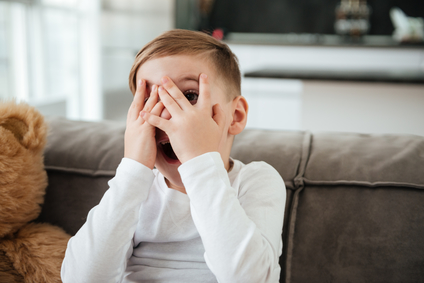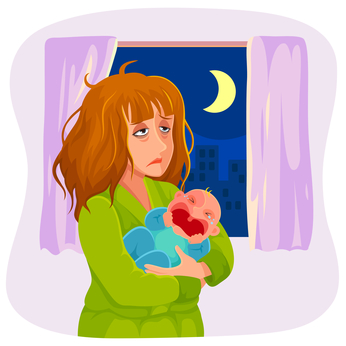
by Keir Brady | Feb 17, 2022 | Family
There are a number of studies that show that relationship satisfaction decreases after the birth of a child. Babies require a lot of work and it can be difficult for parents to make their couple connection a priority. As children grow and gain more independence, some parents continue to put all of their energy into their children, leaving nothing for their partner. The relationship becomes child-centered as the couple disconnects from each other and becomes overly involved with their children. Although the parents may have good intentions, a child-centered relationship can have negative consequences for the entire family.
What Is A Child-Centered Relationship
A child-centered relationship is when parents focus on the children at the expense of the couple’s connection. While it is very important to respond to your children’s physical, emotional, and attachment needs, a child-centered relationship goes beyond this. The wants and desires of the children are prioritized over the needs and health of the marriage. This leaves the parents physically and emotionally exhausted. One, or both of the parents can over identify with their children and disconnect from each other. A child-centered relationship can cause a lot of problems for the couple, and especially for their children.
Relationship Issues Are Not Addressed
When your focus is on your children and their desires, your relationship needs and issues are often ignored. Putting all of your energy and time into your children leaves little time to focus on your spouse. Intimacy suffers and communication breaks down, as you no longer acknowledge, or try to resolve, personal and couple issues. This can lead to constant arguments, passive-aggressive behavior, or avoiding arguments and each other, all together. Relationships require work and attention in order to keep your connection strong. If your focus is primarily on your children and their wants, you may be too exhausted to put time and effort into your marriage.
Children Become More Demanding
Children come to expect a certain level of attention from their parents. If you shower them with attention all of the time, this becomes their norm. This can create the belief that everyone’s lives revolve around them. They may try to join in your conversations with your spouse, or even get in between the two of you when you are not focusing on them. They may find it hard to be alone and expect you to entertain them when they have nothing to do. Children can become upset, or act out when you do not respond to them immediately. They may expect others to shower them with attention as well, which can create difficulty in their other relationships.
Boundaries Become Weak
A child-centered relationship creates weak boundaries with your children. They may have trouble respecting your need for alone time and couple time. Boundaries are important in relationships. Without boundaries, there are no clear limits and expectations for your child’s behavior. This can create a lack of emotional safety, which can cause anxiety in children. Healthy boundaries with effective consequences are good for children and help prepare them to become responsible adults.
Children Become Involved With Adult Problems
If weak boundaries are a problem, children can involve themselves with adult problems. This is especially harmful to children as there is usually nothing that they can do about the issue, except worry about it. Also, children without clear boundaries may insert themselves into their parent’s arguments. Doing this may cause them to choose sides and pit one parent against the other. If you often complain about your spouse to your child, this hurts your child. They may feel they have to defend your spouse, or support you. Either way, this is not healthy for your child.
Children Feel Responsible For Parents Emotions
Another problem with focusing on your child instead of your spouse, is that you may begin to rely on your child for emotional support. This can be confusing and anxiety provoking for a child. When you pull away from your spouse, you may start to expect your child to provide you with comfort and understanding. However, your child may not know how to respond to your emotional needs and they can begin to act out. This puts the child in the role of a parent, as the parent is supposed to be the one attending to their child’s emotional needs. The child may feel a lot of pressure and begin to pull away from the parent and resent their over dependence.
Children Can Experience Relationship Issues
Children learn best by watching what you do, not by listening to what you say. If you have a child-centered marriage, you teach your child to do the same. They may have a difficult time developing healthy relationships, since this is not being modeled for them. It may be hard for them to manage conflict effectively and they may avoid it, or seek it out. Interdependence could be a foreign concept, as they might view relationships as all or nothing. In fact, relationships could be difficult for them and they may have unrealistic expectations in intimate connections.
A child-centered relationship can have a negative impact on your marriage and your children. If your relationship has become child-centered and it is causing problems in your family, therapy can help. When you focus on having a healthy marriage, your children will benefit.

by Keir Brady | Sep 30, 2020 | Family
Anxiety can be challenging to deal with. This can be especially true for children who experience anxiety. Since anxiety can present differently in children than in adults, it can be hard for parents to recognize at times. Anxiety in children can be effectively managed when you understand the symptoms and seek out appropriate treatment.
Types Of Anxiety Children Can Experience
Anxiety in children is similar to anxiety in adults. There is usually fear and worry about something future-oriented with an uncertain outcome. Anxiety is a normal part of the fight-flight-freeze response that helps protect you from danger. However, it becomes problematic when this response occurs in situations that are not dangerous. Children can experience a generalized feeling of nervousness and worry. They can also experience phobias where anxiety occurs in relation to a specific trigger, such as thunderstorms. Some children have panic attacks or exhibit obsessive-compulsive behaviors. Separation anxiety, which is developmentally appropriate in toddlers, can be more difficult to manage in older children who won’t sleep alone or leave a parent’s side. Children can have anxiety in social situations. They can also worry about pleasing parents and teachers and can be very hard on themselves when they make a mistake.
Symptoms Of Anxiety In Children
Symptoms of anxiety can be different for everyone. Some children will express typical worry, fear, panic, and avoidance. For other children, the symptoms can be very different. In some children it is expressed as irritability or even anger. Other children have a lot of physical complaints. They may have frequent stomach aches, headaches, and complain about feeling too sick to do certain things. Compulsive behavior is another way that it can manifest in children. Some children have nightmares and have trouble being alone. Children who have trouble completing tasks because they fear making a mistake may also have anxiety.
Causes Of Anxiety In Children
While an exact cause of anxiety in children is unknown, there are some things that can make a child more likely to develop it. Some children are born with a more anxious, perfectionistic, or shy temperament. Children with ADHD or Autism are more likely to experience it as well. COVID-19, social distancing, and online learning can cause or increase symptoms of anxiety in children. If a parent struggles with anxiety, their child may pick up on their anxious behavior and respond to certain situations in a similar way. They could start responding to their everyday environment with more fear and worry. A child who experiences a traumatic event can also become anxious that it may happen again. This can include the death of a loved one, an accident, or even seeing someone else hurt.
How Anxiety Impacts Children
Anxiety can have a negative impact on a child’s ability to function effectively. Fear and worry can cause them to miss out on important activities. Sometimes they start avoiding people, places, and things that they once enjoyed. Physical complaints that often occur in children with anxiety can perpetuate this avoidance. This actually reinforces the anxiety and creates an avoidance response. Children may be too afraid to try new things and to venture out of their comfort zone. Since it can show up as irritability and anger, children can experience confusion and shame about their feelings and behaviors. Anxiety can lead to problems at school, in their social environment, and at home.
What Can Parents Do
Parents can help their child manage anxiety in a number of ways. You can model healthy ways for your child to respond to their anxiety. Practice breathing techniques and meditation with your child. Listen to your child’s experience and help them name their feelings. Normalize their feelings and encourage them to face their fears. Although it is natural to want to help your child avoid things that cause anxiety, doing this actually reinforces the fear. When children are able to face their fears, they can create new experiences and their fear and discomfort naturally decrease. Let your child know that their anxiety is normal and okay, and that they can handle it and not let it stop them from living their life.
Treatment For Anxiety In Children
If anxiety is having a negative impact on your child’s emotional well-being, there are treatment options available. Cognitive Behavioral Therapy (CBT) is an effective treatment to help manage anxiety. CBT can help children alter distorted thought patterns that lead to unwanted behaviors. A component of CBT, exposure and response therapy, helps children decrease anxiety related to a specific trigger through gradual exposure. Exposure therapy is especially effective in the treatment of phobias and separation anxiety. Medication can also be used to help children manage their anxiety.
There is help available if your child is struggling with anxiety. Therapy can teach your child effective coping strategies. This way your child can manage their anxiety so it doesn’t have a negative impact on their emotional well-being.

by Keir Brady | Mar 25, 2020 | Family
With social distancing becoming the norm during the coronavirus (COVID-19) outbreak, daily routines are drastically changing. As schools close and many parents work from home, adjusting to the changes can be quite challenging. It is common for anxiety to increase during times of change and uncertainty. However, there are some things you can try to help protect your mental health and make it easier to cope with family isolation due to the coronavirus.
1. Create Some New Family Rules
Family rules help keep everyone on the same page by establishing expectations and consequences. As everyone adjusts to spending a lot of time in close quarters with each other, it will be easy to see where rules might be needed to maintain the peace. You may need to establish rules around personal space, work needs, daily chores, and screen time. If you are working from home, you may need to discuss with your children what that means and what you expect from them. Rules should be clear, stated positively, and have consequences that everyone understands. Consequences can be either negative or positive and can increase if the rule continues to be broken. Creating some new family rules can make it easier for everyone to understand what is expected during this time.
2. Maintain A Flexible Schedule
Following a daily schedule is normal for most people, this is especially true of children who often do well with a structured routine. In times of uncertainty, a daily routine can create a sense of normalcy. Having a schedule in place can help families cope with the current situation more effectively. However, a strict schedule could be very difficult to follow during the adjustment period. At this time, many children are participating in online school and many parents are working from home. While it’s helpful to have a schedule, without some flexibility the schedule can add more stress to your lives. For instance, if your children are supposed to do their school work from 10 a.m. until 12 p.m., and the system is down then, arranging the schedule differently will be necessary. A schedule that allows for flexibility when needed will be most beneficial to your family at this time.
3. Support Each Other
This situation is new for everyone. There is a lot of uncertainty and unknowns and anxiety typically increases under these conditions. Talk about your needs, worries, and concerns. Ask for help if you need it. Come up with a plan for dividing responsibilities and chores that works for your family. Your children also need a place to share their feelings and experiences. If you listen to each other and encourage open sharing, you will be less likely to start resenting one another. Children are less likely to act out and have a tantrum if you are able to help them put words to their feelings. This difficult situation can be made a little easier for everyone with proper support.
4. Teach Life Skills
Use this time to teach your children important life skills. Children and teens often have busy schedules. Between school, homework, and after school activities it can be hard to find spare time. Since you have time to spend with each other during the family isolation period, you can use this time to teach your kids important life skills. You can teach your children how to cook a meal, clean the house, do their own laundry, maintain a car, and balance a checkbook. Younger children can help you by putting together ingredients, or handing you tools. Older children can first complete some of these tasks with you, and when ready can try to do it on their own. When it is time for your children to go out into the world on their own, it will be easier to let them go when you are confident they have the necessary skills.
5. Spend Time Together
Spend time together as a family. Even though you are together more at this time, it doesn’t necessarily mean you are spending quality time together. You still want to be intentional about scheduling time with your family. Spend time playing together outside, exercise together, or practice meditation and other mindfulness activities. Family game nights, make your own pizza nights, and family movie nights are some ways to encourage spending quality time together as a family. When you spend time together focusing on fun instead of your worries, the entire family will benefit. You can use this time together to grow closer to one another.
6. Implement Quiet Time
While spending time together at this time is important, so is spending time alone. Both children and adults benefit from scheduling a quiet time during the day. This is a time during the day that everyone spends time alone engaging in quiet, solitary activities from 30 minute to 1 hour. Quiet time provides an opportunity to engage in self-care, focus on and process your feelings, utilize your imagination, and practice mindfulness. Having this time away from one another can minimize arguments between siblings and gives everyone personal space. Spending time engaged in solitary, quiet activities is good for everyone in the family.
7. Encourage Acceptable Social Interaction
Humans are wired for connection. Social distancing can make it harder to feel connected to others, which can increase feelings of loneliness. While it may not be a good idea to connect with others face-to-face, there are safe ways to stay connected. Video calls, staying connected on social media, phone calls, texting, and even letter writing are safe ways to stay connected with friends and family, while maintaining a safe distance. Making sure your family members stay in touch with their social connections during this time is important to their emotional well-being.
Although family isolation during the coronavirus outbreak can be difficult, you can survive and even thrive with some adjustments. If you have tried implementing the above strategies and are still struggling, virtual family therapy can help. By putting a plan in place, your family can come out of this isolation period with an even stronger connection.

by Keir Brady | Mar 4, 2020 | Family
Establishing a quiet time routine for your children can be quite helpful to their development. Our fast-paced society is very stimulating. This can be especially true for children since they are constantly exposed to new information. However, in order to make sense of the information, children need to process what they are learning. They do this best in an environment with little to no additional stimulation. In fact, daily quiet time provides a number of benefits for children.
What Is Quiet Time
Quiet time refers to a scheduled period of time during the day for your child to engage in independent activities with little external stimulation. During this time, electronic devices should be limited. Your child should be encouraged to entertain themselves in a safe area. Often, quiet time can take place in a child’s bedroom. Young children might benefit from a timer that goes off when quiet time ends. If you have children that are close in age, you will want to make sure they each have a separate area to use for quiet time. Once your children give up their naps, quiet time is appropriate for all ages. Quiet time usually lasts for at least 30 minutes, and sometimes up to an hour or longer, depending on the needs of your child. While it might seem like a break for you, quiet time also provides important benefits for your child.
How To Establish Quiet Time
Young children often benefit from a schedule. When there is a consistent routine, kids can feel more secure. It is helpful to incorporate quiet time into your child’s schedule every day. This is a good idea for children of all ages, from two to eighteen. For teenagers, you can call it mindfulness, or meditation time. It will even be beneficial for you to try. Wherever you decide to have your child engage in quiet time, make sure there are safe things for them to use creatively. Establish some rules around the use of electronics so your children will get the most out of their time alone. You may want to let your child know what is and is not appropriate during their quiet time. Such as leaving the area before the timer goes off, damaging things, or being too loud. Your child will benefit in many ways by having a scheduled daily quiet time.
It Helps Them Process
Children are constantly learning. They are often bombarded by new information, or old information being used in a new way throughout the day. Receiving information is only a part of the learning process. Kids also need to make sense of this information by processing it. Quiet time gives children a chance to process, organize, and synthesize new information. This helps deepen their learning. Time resting, but awake, helps kids solidify the things they’ve learned throughout the day. Quiet time provides an opportunity for this solidification to occur.
Creativity Improves
Scheduled quiet time enables children to engage their imagination. Imagination and quiet time help creativity flourish. When kids engage in quiet time, their attention, focus, and creativity increase. They learn how to manage boredom and turn it into an opportunity to problem-solve. Your brain doesn’t shut down during quiet time. In fact, it is busy actively evaluating and internalizing information. Without a lot of external stimulation, children are able to tap into their innate creativity. Since quiet time is unstructured, kids are able to become very creative as they let their imagination take charge.
It Helps Them Recharge
Engaging in quiet time each day gives kids an opportunity to recharge. When they have time away from stimulation, kids can become more tolerant of others, and more patient in general. A little time reflecting on their experiences helps them gear up for the new things to come. Providing a scheduled quiet time for your children can also decrease their tantrums as they feel more refreshed and recharged afterwards. When your child is recharged, it’s a lot more relaxing spending time with them.
Feelings Are Better Understood
Kids are able to understand, tolerate, and even regulate their emotions more effectively when they have quiet time every day. It can be hard for a lot of people to sit with their thoughts and understand their feelings. When children have scheduled quiet time, they have time to sit with their feelings and let them be felt. This enables them to acknowledge what they are feeling, differentiate their feelings, and process their feelings. Good mental health habits can be established, and symptoms of anxiety and depression can decrease, when kids have time to sit with their feelings.
It Helps Them Self-Soothe
While your children will naturally turn to you for comfort, self-soothing is an important skill for kids to learn. Quiet time provides an opportunity for your child to learn to manage boredom and comfort themselves. This way, they can learn to calm down and better regulate their emotional responses. When a child is able to self-soothe when they feel distressed, they are often more willing to try new things. This can help them build their self-confidence and can increase their self-esteem.
Mindfulness Improves
Mindfulness, being fully present in the moment without judging what is happening, is a great skill for children to practice. Quiet time provides an opportunity for kids to be mindful. Practicing mindfulness helps improve emotional well-being and provides a sense of inner calm. While young kids are naturally good at mindfulness, practicing mindfulness can be especially helpful for teenagers. Mindfulness activities such as meditation and yoga can help children feel more grounded and more self-aware.
These are some of the benefits that your child will experience when they participate in quiet time. When children are able to find calm in the midst of chaos, the benefits will be long lasting. By establishing a daily quiet time, you give your children the gift of peaceful solitude that they can utilize throughout their life.

by Keir Brady | Jan 29, 2020 | Family
Tantrums are extremely common in children between the ages of one and four. Although you might know this intellectually, it can be quite difficult to deal with your child screaming and yelling in the grocery store because they can’t have candy. You might be embarrassed, or fear being judged as a bad parent. While it may not be possible to prevent it, there are some ways to support your child during a tantrum.
What Is A Tantrum
A tantrum is an emotional outburst caused by emotional distress. Although It is a normal part of child development, it can be frustrating for parents. When a young child is experiencing a tantrum, they might hit, throw things, bite, scream, cry, or hold their breath. Your child might be inconsolable and might resist your attempts to comfort them. This can be hard for parents, especially if a tantrum occurs in a public setting.
Why Do Young Children Have Tantrums
Children can experience a tantrum for a variety of reasons. A tantrum is more likely to occur if your child is thirsty, tired, or hungry. It can also occur if there has been a change in their normal routine. A tantrum can be in response to an unmet desire, which a young child can see as a need. For example, your child wants a cookie and you want them to eat their dinner first. They may have a tantrum because they want the cookie now, not after dinner. Young children have a hard time regulating their emotions. They often feel overwhelmed by their feelings and lack the vocabulary to articulate their experience. Even though tantrums in young children are normal, there are things you can do as a parent to help.
1. Safety First
Young children are naturally self-centered and have great difficulty with delayed gratification. Because of this, when their desires are not immediately responded to, they could have a tantrum. As a parent, it is important to make sure that your child is safe when they are having a tantrum. You also need to make sure that everyone else is safe as well. Moving a child to a different area, taking away things they can throw, or keeping other children at a distance can help keep everyone safe until your child calms down. Reasoning with an out-of-control child seldom works. Therefore, the first step in managing your child’s tantrum is making sure everyone is safe.
2. Regulate Your Own Emotions
When your child is having a tantrum and is inconsolable, you might notice yourself feeling upset, frustrated, and a bit out of control as well. This is due to mirror neurons. Mirror neurons enable you to attune to another’s experience and reflect it back. However, getting angry or upset yourself because of the frustration experienced by your child will only escalate the situation. Instead, it is more helpful if you are able to remain calm. This way you will be able to stay in the situation to help your child understand their experience without allowing your own feelings to take over.
3. Speak Softly
One way to keep things from escalating is to lower your voice. If you try to raise your voice to the level of your child, you will need to scream. This can cause you and your child to feel even more out of control. Lowering your voice and speaking calmly yet firmly, might cause your child to lower their voice so they can hear you. While this won’t always work immediately, your child will learn over time that they can gain more control over their reactions when they speak in a calmer tone.
4. Attune To Your Child
Another way to help your child during a tantrum is attunement. Attunement refers to being aware of and responsive to the needs of another. When you attune to your child, you respond to their subtle cues to determine what is going on for them. Attunement helps you bond with your baby and form an attachment. This enables you to notice when they might be tired, hungry, or sick. By attuning to your child, you can take steps to avoid a tantrum by addressing the needs of your child. You can also better understand what your child may be trying to communicate with their tantrum when you attune to them.
5. Name The Feeling
It is difficult for young children to discern and identify their feelings. They could also be lacking the words to express what they are experiencing. Let your child know that their feelings are okay, no matter what they are feeling. Help them name their feelings so they can begin to learn how to identify their emotions. If you can see they are sad because their friend took their toy, state this. When you validate their feelings, they can begin to process their experience. Sometimes your child just wants to feel heard and understood. Once they believe that you get it, that might be enough for them to begin to calm down.
6. Give Them Space
If you have tried all of the above suggestions and the tantrum is continuing, give your child space. Let them know that it is okay if they need to cry and if they need your help to let you know. Maybe they just need a good cry. When they have calmed down a little, you can ask if they would like a hug. Reassure your child at this time and see if you can redirect them. A hug and a little understanding can go a long way towards helping your child feel better.
Although tantrums are a normal way for your young child to express their frustrations, they can still be hard to deal with. Tantrums are normal and can be used to help teach your child about their feelings. Once your child is able to explain their emotions with words, their tantrums will most likely decrease. Having a parent to support them through their overwhelming feelings can help improve their emotional well-being.

by Keir Brady | Jan 8, 2020 | Family
Pregnancy and childbirth is a special time in a woman’s life. However, it can be a difficult and even scary time for women who experience a mood disorder. If you are feeling disconnected from your baby, have difficulty feeling joy, or experience anxiety, you might have a peripartum mood disorder (PPMD). Read on to learn more about PPMD.
PPMD
PPMD encompasses a number of different mood disorders. Although postpartum depression is the most commonly known, other mood disorders can also occur. This includes mood disorders such as peripartum anxiety, peripartum obsessive-compulsive disorder, and peripartum psychosis. The key factor in receiving a diagnosis of PPMD is that the symptoms occur during pregnancy or shortly after giving birth. Peripartum is used instead of postpartum since it is recognized that symptoms can occur prior to giving birth as well as after delivery.
The Baby Blues
It is normal to experience mood swings and negative feelings after giving birth. This is commonly known as the baby blues. In fact, up to 80% of women will experience the baby blues within several days after giving birth. While you might experience crying spells, irritability, anxiety, and mood changes the symptoms will end after a two week period. Symptoms also last for short periods of time during the day. They do not last all day. The baby blues are thought to be caused by hormonal changes after delivery and possibly the adjustments that occur when you bring home a new baby. Symptoms are not as severe as PPMD and will go away on their own.
Symptoms
Symptoms of PPMD will vary based on the type of peripartum mood disorder that you experience. To be given a diagnosis of a mood disorder with peripartum onset, you will need to meet the requirements for the disorder according to the Diagnostic And Statistical Manual Of Mental Disorders (DSM-5). The symptoms will also need to occur during pregnancy or not long after delivery. Symptoms of peripartum depression include feeling sad most days for most of the day and a lack of interest in things previously enjoyed. You might also experience feelings of hopelessness and worthlessness. If you are experiencing peripartum anxiety your symptoms probably include constant or near constant worry and racing thoughts. Panic attacks might also be something you experience. Peripartum psychosis is a rare medical emergency. The symptoms include hallucinations, paranoia, rapid mood swings and delusions.
Symptoms Specific To PPMD
While many of the symptoms of PPMD are related specifically to the mood disorder being experienced, there are additional symptoms that occur related to the peripartum period. Mother’s experiencing PPMD might feel disconnected from their baby and have difficulty forming a secure attachment with their child. You could feel numb or sad, and inadequate as a mother. If you have PPMD, you might worry constantly about the health and well-being of your child, while feeling unable to care for them appropriately. Feeling as though you are just going through the motions while believing everyone else can do a better job taking care of your baby is possible. There could be feelings of loneliness and isolation and thoughts of suicide. You may believe that everyone would be better off without you. It is also possible to experience extreme rage, guilt and resentment that can be exacerbated by being unable to calm or breastfeed your baby.
Why It Can Be Hard To Diagnose
A woman goes through a number of changes during pregnancy and after the birth of a baby. Sleep and eating changes are a normal part of this process. Although at other times, eating or sleeping more or less than usual can be used to alert you to a possible problem. You might believe, or even be told, that your symptoms are just the baby blues and will go away on their own. It is also possible that you might hide your symptoms for fear of being judged harshly by others. Minimizing your symptoms to others, and maybe even to yourself, and suffering in silence is another possibility. Not everyone is educated about PPMD and they may believe your symptoms to be a normal part of childbirth.
Causes
While the exact cause of PPMD is unknown, it is thought to be due to multiple factors. There are a number of physical, hormonal, and emotional changes associated with pregnancy and childbirth. A rapid decrease in thyroid hormones can lead to depression or anxiety. Estrogen and progesterone drop significantly following childbirth and can have an impact on a new mother’s emotional well-being. Add to this the changes in a new mother’s body and adjusting to an infant’s needs. Lack of sleep, isolation from others, and the stress of caring for an infant, can all contribute to the development of PPMD. If the birth experience was traumatic, there are social stressors, you are in a difficult or abusive primary relationship, or if illness develops in mother or child, you could have a greater risk of developing PPMD. Experiencing PPMD in the past, having a personal history of a mood disorder, or having a family history of mood disorders can also increase your chances of PPMD.
Treatment
If you experience PPMD, there are treatment options available. Medication and psychotherapy can help ease the symptoms of PPMD. The medications used will depend on the type of PPMD that you are experiencing. Individual therapy can help you learn to manage the symptoms of PPMD. Couples counseling can help strengthen your relationship during this time. Group therapy can provide a safe space for you to share your experiences with others who can relate. Reaching out to others for support and help with child care duties can also be beneficial.
If you are experiencing PPMD, you do not have to suffer alone. It is important that you tell someone you trust about the symptoms you are having so you can get help. This could be your doctor, friend, family member, mental health professional, or spouse. The important thing is that you get the help you need. With the right treatment, you can feel better and improve your overall emotional well-being.








